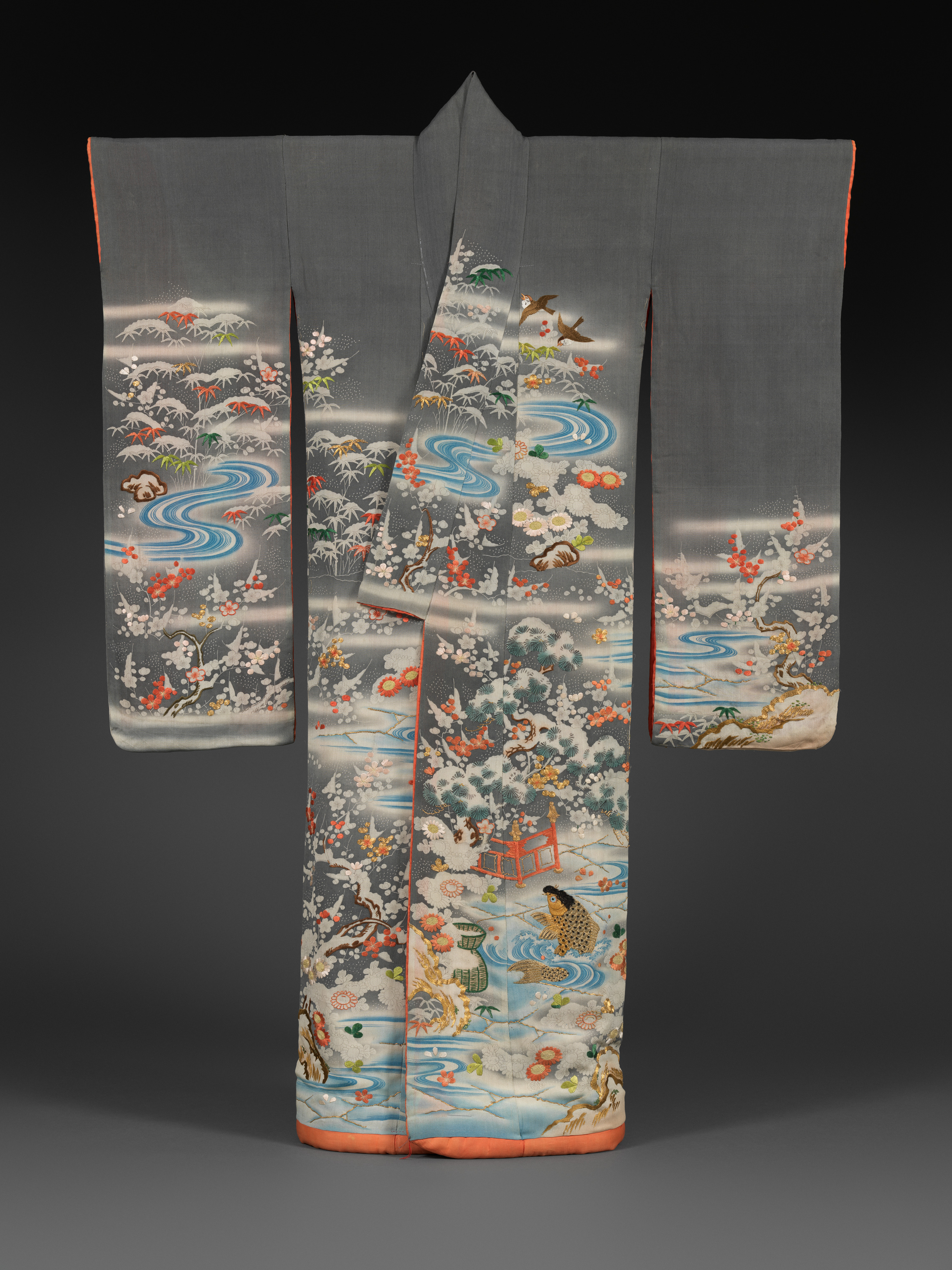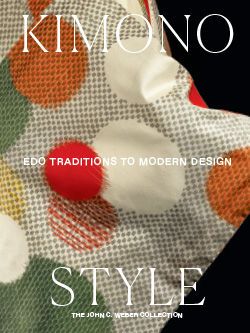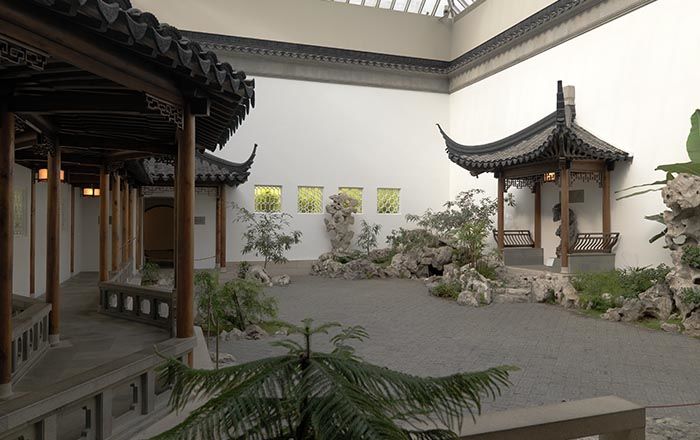Outer Robe (Uchikake) with Scenes of Filial Piety
Not on view
In the second half of the Edo period, women from the samurai class often wore robes with auspicious, literary, or didactic themes integrated into landscape designs. Embedded within the winter scenery of this robe are visual references to The Twenty-Four Paragons of Filial Piety, a famous Chinese text from the Yuan dynasty (1271–1368). The story collection advocates for the Confucian tenet of respect for one’s ancestors and parents. Among those represented here is Wang Xiang, an official who fulfilled his ailing stepmother’s craving for fresh fish in midwinter by lying on an icy lake until it melted and yielded carp. Another legendary figure, Meng Zong—evoked by the hat, straw cape, and hoe seen on the back of the right sleeve—went to a snowy forest to gather bamboo shoots after his ill mother expressed a desire for the out-of-season vegetable. In honor of his filial piety, bamboo began to sprout from the frozen undergrowth.
On view for rotation 2 only.
This image cannot be enlarged, viewed at full screen, or downloaded.
This artwork is meant to be viewed from right to left. Scroll left to view more.




